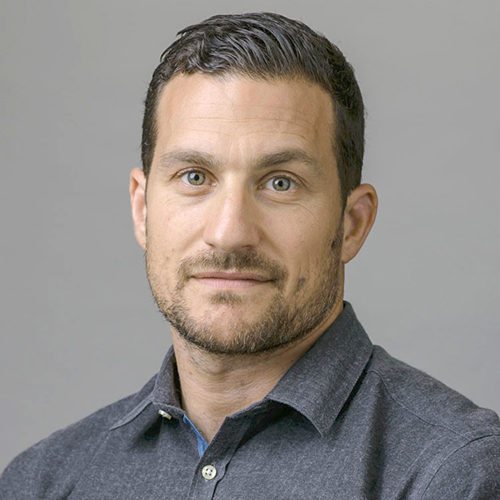Guide to Non-Sleep Deep Rest (NSDR) and how to get started
NSDR helps slow down your thought-flow and brain wave frequency, allowing your brain and body to rest deeply. It can help with sleep, stress, anxiety ... and even learning.

A few months ago, in an interview with The Wall Street Journal, Google/Alphabet’s CEO Sundar Pichai was asked about how he unwinds from his hectic Silicon Valley days. Does he journal? Meditate? Eat a quart of ice-cream?
His answer brought attention to a practice that many people hadn’t heard of — or at least not the term Pichai used to describe it.
I struggle to do meditation, he said, adding that he relaxes by walking and also listening to podcasts based on non-sleep deep rest, or NSDR. “I can go to YouTube, find an NSDR video. They’re available in 10, 20 or 30 minutes, so I do that occasionally.”
Which left many people wondering, what is NSDR?
So what is Non-Sleep Deep Rest (NSDR)?
NSDR, or Non-sleep deep rest, is a term coined by neuroscientist and researcher Andrew Huberman, PhD, professor in the Department of Neurobiology at Stanford University’s School of Medicine and host of the Huberman Lab podcast. In fact, it’s just another name for a centuries-old practice called yoga nidra, which means yogic sleep in Sanskrit.
According to Dr. Huberman, Non-sleep deep rest:
- Helps with memory retention
- Enhances rates of neuroplasticity, which can promote learning
- Relieves stress
- Improves cognitive function
- Improves sleep quality
- Enhances focus and mental clarity
- Potentially helps with pain management

Huberman uses the term as an umbrella for things like naps, hypnosis, and meditation, all of which are anchored to the same idea of allowing people to tune out of the thinking brain and achieve a state of calm.
So then what is Yoga nidra? Yoga nidra is the practice of accessing a conscious state of mind that falls somewhere between being awake and falling asleep. A deep state of relaxation with awareness. It involves two steps: a self-induced state of rest followed by a period of directed, intense focus.
It’s similar to meditation, but rather than sitting upright, you’re lying down, and following guidance from an instructor. You may be asked to scan your body for places of tension, bring awareness to different parts of your body, or focus on your breathing.
The goal is to enter a conscious sleep state and totally relax your brain, thereby releasing unwanted tension in your body and achieving calm. As the body enters this calmer state your brain waves decrease in frequency, your thoughts can slow (from 35 thoughts per minute to 1-3!), and your body slows the production of stress hormones (e.g., cortisol) as the parasympathetic nervous system kicks into gear.
According to teacher-practitioner Liam Gillen of the Amrit Yoga Institute, if you do it right, a 30-minute session can be equal to three to four hours of restorative sleep for the body.
“We know from work in my laboratory . . . as well as work from other labs that a state of shallow nap or shallow sleep done in waking” allows the brain (i.e., you) to get better at turning off thoughts and falling asleep at night, Huberman said.
“We generally have trouble falling asleep because we think we have to turn off our thoughts like a switch, but the transition to sleep involves allowing our thoughts to become fragmented,” he explained. “It’s then that we become relaxed, and the brain enters a more fluid state that’s not under our conscious control.”
And those are skills we can teach ourselves.
The practice for me has “really helped reduce stress and allowed me to fall asleep more easily and control my state of mind late in the evening,” Huberman said.

NSDR and neuroplasticity
Because NSDR allows the brain to access states of deep rest — which can facilitate sleep and reduce anxiety and stress — according to Huberman, it also enhances brain neuroplasticity and learning. Neuroplasticity is the nervous system’s ability to change in response to experience. (Nervous system being the brain, the spinal cord, and all the connections that the brain and spinal cord make with the organs of the body.)
The actual rewiring of neural connections happens during sleep, and sleep-like states. “During sleep there’s a ‘replaying’ or repetitions of neural activity at very high speeds,” which is why you learn in sleep, Huberman explained in this lecture. “In sleep, you’re rehearsing and rewiring the brain so that a skill or some type of learning that was once hard, something that had to be done with intense focus, becomes reflexive.”
Two papers published in the last two years showed that about 20 minutes or so of non-sleep deep rest after a bout of intense focus or learning — skill learning or cognitive learning — accelerates plasticity by about 50 percent. So essentially you are learning faster, and retention of that information lasts much longer.”
Now we know: scientists love acronyms
Admittedly, Huberman came up with the term NSDR “because scientists like acronyms almost as much as the military likes acronyms!” he told Tim Ferris. “And I did it deliberately, not to rob the yoga community of anything” but to describe this practice in more friendly, accessible language since many people would be put off by something called yoga nidra. “And yet it’s such a powerful tool. It’s a zero-cost tool that has enormous effects on accessing sleep and calm.”
If you want to try NSDR, a.k.a. yoga nidra
Be sure to the yoga nidra videos of different lengths all over YouTube. Huberman likes those by Kamini Desai because he likes her voice. He recommends sampling a few to see which ones appeal to you.
One we tried, and really liked, was this one by Liam Gillen. Listening in bed, we found ourselves in a dreamlike, drifty state, where Gillen’s voice was clear but slightly disembodied. He has listeners do some progressive muscle relaxation, followed by bumble bee breathing and possibly a visualization—we can’t quite recall. Following the session we fell into a deep, restorative 10-hour sleep.

